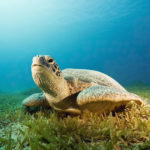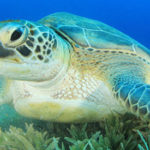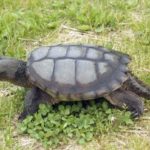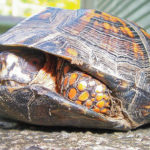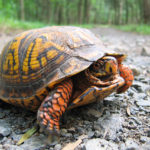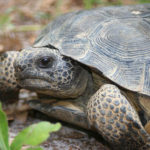Facts about tortoises
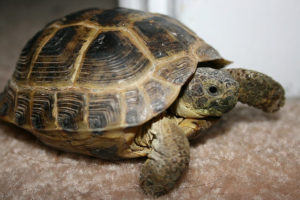 Tortoises have inhabited our planet for more than 220 million years. They live both on water and on land, surrounding us everywhere. It would seem that we should know everything about them. But we do not even know much about and very interesting about turtles and their lives.
Tortoises have inhabited our planet for more than 220 million years. They live both on water and on land, surrounding us everywhere. It would seem that we should know everything about them. But we do not even know much about and very interesting about turtles and their lives.
- Until now, it remains unknown who the turtles originated from.
- The largest turtle of the living – leatherback turtle. The mass of her body can reach 900 kilograms, and the length is 2.5 meters.
- The smallest is the Cape tortoise, its body length is 11 centimeters, and the weight is only 214 grams.
- Some species of sea turtles have lacrimal glands, with their help turtles derive excess salt from the body.
- The tortoise shell is very durable, and in some species it can even withstand a gravity 200 times greater than the weight of the turtle itself.
- The structure of the shell of water and land turtles is very different, this is due to their different ways of life. In the land tortoise, the shell is tall and domed, with a sea turtle, it has a streamlined drop-shaped shape, freshwater tortoises have a more flat, smooth and low shell.
- The tympanic eardrum is located directly on the head.
- Giant turtles can regulate the size of the population. For example, if the density of a population is high in one section, the females lay 4-5 eggs every few years, and if on the contrary, the density is small, then the females lay 14 eggs several times a year.
- Meat of many kinds of turtles is used by man for food. But meat of some species is poisonous and even cases of meat poisoning of crab turtles, encores and leathery ones are known.
- Most species of turtles are listed in the International Red Book. The main factor of extinction is hunting for animals by humans and other animals, as well as pollution of the habitat.
- The life expectancy of turtles on average ranges from 50 to 150 years. But there are recorded cases when turtles survived to 188 years (turtle Tuy Molina).
- Turtles fall into both summer and winter hibernation.
- Skin turtle can live north of all other species. This ability is due to the higher temperature of her body, but to live in cold waters, she needs to constantly eat.
- The Mediterranean tortoise at times of danger hisses like a gyurza.
- Elephant turtles feed on poisonous plants that do not eat other animals.
- A brown turtle is the only tortoise that cares about its offspring. She specially builds nests and protects her offspring.
- Males of Indian turtles during the mating season change their skin color in the eye and nose area.
- Sea turtles know how to navigate in space around the Earth’s magnetic field and, thanks to this ability, after many years they can return to their birthplace.
- Female sea turtles reach puberty only at the age of 30 years.
- Green turtles for the first five years after their birth only eat zooplankton and nekton, and after this time they become completely herbivorous.



